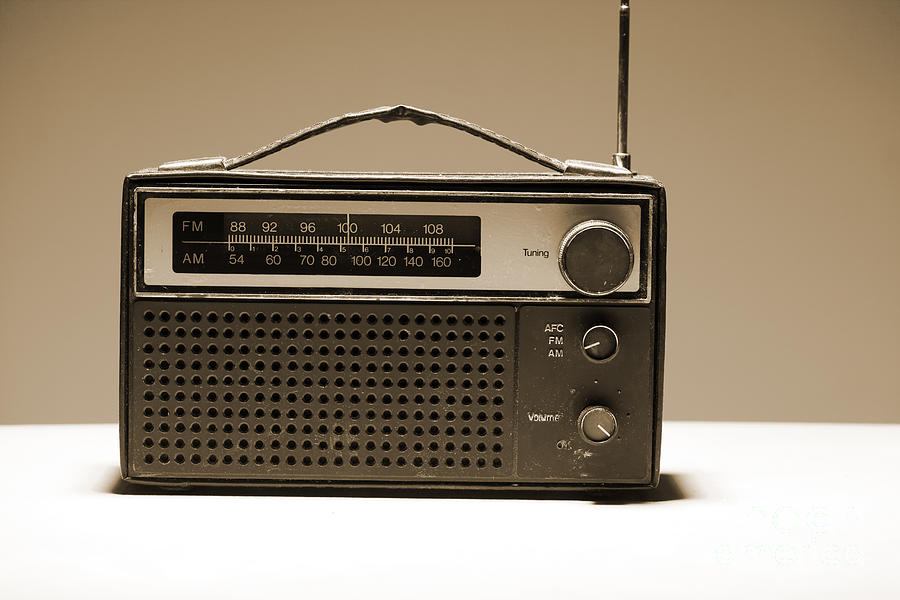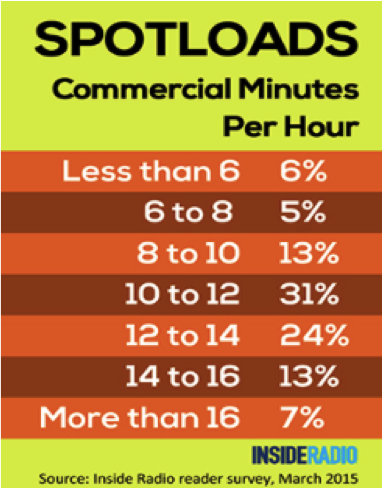 Later today, I will participate in a webinar where we will review industry survey data about Internet and broadcast radio ad loads and other economic factors driving the audio market. Broadcast radio ad loads are a hot topic. Last year, a radio station in Seattle made headlines by saying it would cut its ad load to six minutes per hour, down from twelve. Why did they make this radical move? The station wanted to improve listener experience with more music and fewer ads. The program director Garrett Michaels of KNDD commented at the time:
Later today, I will participate in a webinar where we will review industry survey data about Internet and broadcast radio ad loads and other economic factors driving the audio market. Broadcast radio ad loads are a hot topic. Last year, a radio station in Seattle made headlines by saying it would cut its ad load to six minutes per hour, down from twelve. Why did they make this radical move? The station wanted to improve listener experience with more music and fewer ads. The program director Garrett Michaels of KNDD commented at the time:
“You also told us that there are too many commercials on the radio, and the commercial breaks take too long. We heard you, and we’re going to do something about it. Starting now, we will take half of our commercials off the air, and we’ll never play more than 2 minutes of commercials at a time.”
This was viewed as a radical move in many radio circles despite the fact that six minutes is still more than twice the hourly ad load of Internet radio.
What is Broadcast Radio Ad Load?
 The actual broadcast radio ad load has been a matter of debate for several years. A recent survey by Inside Radio suggests that the KNDD ad load of 12 minutes was very close to the industry average.
The actual broadcast radio ad load has been a matter of debate for several years. A recent survey by Inside Radio suggests that the KNDD ad load of 12 minutes was very close to the industry average.
Looking at the Inside Radio findings, KNDD’s new ad load falls in the lowest 11% of all broadcast stations. More than half of broadcasters claim to maintain ad loads in the 10-14 minute range. An analysis of the full results suggests a weighted average ad load of 11.49 minutes. That is 4.27 times higher than the current Internet radio ad loads.
That brings us to another point. The KNDD move was about maintaining audience loyalty and reducing ad load was a key part of the strategy. Where were the listeners going? Many were clearly going to the much lower ad load Internet radio medium that maintains an ad load of less than three minutes per hour.
Will Ad Loads Change?
Most people in the industry don’t expect much change. Later today, results from a RAIN News and XAPPmedia study will reveal that nearly half of industry insiders expect no change in broadcast radio ad loads over the next three years. Even more surprising, nearly 20% expect an increase. The steady decline in radio advertising revenue over the past five years is well documented. Many people are surely aware of the revenue erosion and fear that reduced ad loads will only intensify the problem.
When the only alternative was a $13 monthly subscription to satellite radio that also had ads on many stations, the industry could get away with a less-than-optimal listener experience. The availability of low ad load, personalized listening on every smartphone changes the competitive landscape.
Can a Challenge Catalyze an Opportunity
 Advertising is the most important revenue source for broadcast radio, but it may now be among the biggest threats to maintaining audience. Lower audience will suppress ad rates and further pressure the revenue line. In fact, audience declines may force a reduction in ad loads simply because of challenges in maintaining fill rates.
Advertising is the most important revenue source for broadcast radio, but it may now be among the biggest threats to maintaining audience. Lower audience will suppress ad rates and further pressure the revenue line. In fact, audience declines may force a reduction in ad loads simply because of challenges in maintaining fill rates.
However, the long-term relationships between local advertisers and broadcast radio might be an unrecognized asset that can support building an online radio presence. Everyone seems to know that broadcast radio has programming expertise and that can be an asset when attempting to build audience online. Many overlook that monetizing Internet radio streaming is an even bigger challenge and broadcast radio has deep expertise in this area. It also has the ability to offer reach across both broadcast and online channels that local advertisers – that tend to pay the highest ad rates – will value.
High ad loads may be a symptom of the problem of overreliance on a single revenue source. However, when it comes to audience retention, high ad loads are simply a problem. The opportunity for broadcasters is to leverage their expertise in advertising and deep relationships with local advertisers to offer new audience reach online.
Related Posts
Join RAIN News & XAPP for The Internet Radio & Streaming Report Webinar
Helping Broadcast Radio Drive Mobile Revenue
Streaming is a Growth Opportunity for Broadcast Radio
